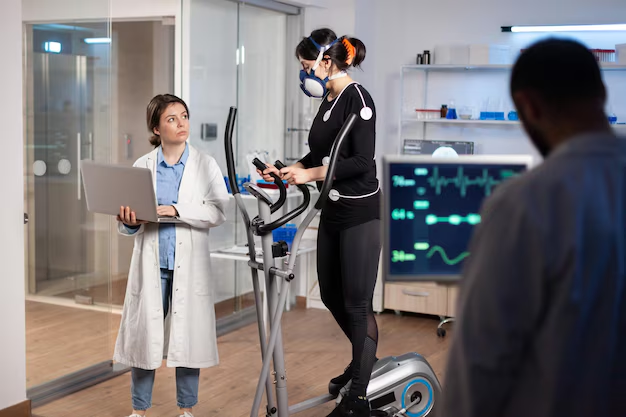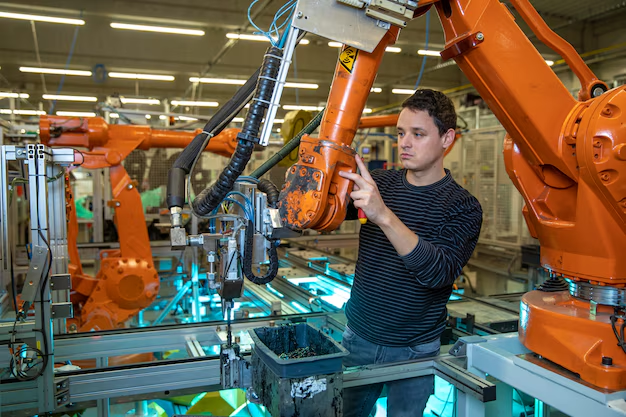In the rapidly evolving world of technology, robotics has emerged as a transformative force, reshaping industries, improving our daily lives, and offering unprecedented opportunities for the future. From industrial applications to personal assistance, robots are no Robotics Unleashed longer confined to science fiction. They are here, and they are changing the world as we know it. In this article, we will delve into how robotics is unleashing new possibilities, from enhancing productivity in various sectors to revolutionizing healthcare, transportation, and beyond.
1. The Rise of Robotics: A Technological Revolution
Robotics is advancing at an incredible pace, driven by innovations in artificial intelligence (AI), machine learning, and automation. Once seen as a futuristic concept, robots are now a reality, and their capabilities are growing exponentially. They are being deployed in various industries to perform complex tasks that were once thought impossible.
The Evolution of Robotics:
- Early Automation: The first industrial robots, such as Unimate, were introduced in the 1960s to handle repetitive tasks in manufacturing plants. These robots laid the foundation for the automation we see today.
- AI and Robotics Integration: Today’s robots are equipped with AI, enabling them to make decisions, adapt to new situations, and learn from their environment, making them more versatile than ever before.
- Autonomous Systems: From self-driving cars to delivery drones, autonomous robots are transforming the way we interact with technology and conduct business.
2. How Robotics is Reshaping Industries
Robotics is making a massive impact across various industries by improving efficiency, reducing costs, and enhancing safety. Here’s a closer look at how robotics is transforming key sectors:
Manufacturing and Automation:
One of the most significant contributions of robotics is in the manufacturing industry, where robots are used for everything from assembly to quality control. These machines can work faster, more accurately, and tirelessly, increasing productivity while reducing human error.
- Robotic Arms: Widely used in assembly lines, welding, and material handling, robotic arms are central to modern manufacturing operations.
- Flexible Automation: Robots can be easily reprogrammed for different tasks, enabling manufacturers to adjust production lines for various products.
Healthcare Industry:
In healthcare, robotics is improving patient care, reducing human error, and even performing delicate surgeries. Robotic technology allows for more precise and minimally invasive procedures, leading to faster recovery times and better outcomes.
- Surgical Robots: Robotic systems, like the da Vinci Surgical System, allow surgeons to perform complex procedures with greater precision and control.
- Robotic Prosthetics: Robotic prosthetics are providing amputees with improved mobility and functionality, significantly enhancing their quality of life.
- Assistive Robots: Robots designed to assist the elderly or individuals with disabilities are providing much-needed help in daily activities, such as medication reminders and mobility support.
Transportation and Logistics:
Robots and autonomous systems are revolutionizing how goods are moved and delivered. Autonomous vehicles, drones, and robotic sorting systems are making transportation and logistics faster, more efficient, and safer.
- Self-Driving Cars: Autonomous vehicles are transforming the transportation industry by eliminating human drivers, reducing accidents, and improving traffic efficiency.
- Robotic Drones: Drones are now being used for last-mile delivery, offering faster delivery times, especially in urban areas.
Agriculture:
The agriculture industry is seeing significant advancements due to robotics. Robots are being used to perform tasks such as planting, harvesting, and even sorting crops, making farming more efficient and sustainable.
- Automated Harvesting: Harvesting robots can work around the clock to pick crops with precision, reducing labor costs and increasing harvest efficiency.
- Drones for Monitoring: Agricultural drones are used to monitor crops, provide data on crop health, and optimize farming practices.
3. Robotics in Our Daily Lives: From Homes to Healthcare

Robots are also playing an increasingly important role in our personal lives, enhancing convenience, safety, and quality of life. Here’s how robotics is transforming daily living:
Smart Homes and Household Robots:
- Smart Assistants: Voice-activated assistants, like Amazon Alexa and Google Assistant, are powered by AI and robotics to make our homes smarter and more connected.
- Robotic Vacuum Cleaners: Robot vacuums, such as Roomba, autonomously clean our homes, saving time and reducing the need for manual labor.
Robots for Personal Assistance:
- Robotic Companions: Robots are being designed to provide companionship, especially for the elderly or people with disabilities, improving mental well-being and offering assistance with daily tasks.
- Personal Robots: Robots are now available to perform a variety of roles, from serving as personal assistants to helping with chores like cooking or cleaning.
4. The Role of AI in Advancing Robotics
The fusion of artificial intelligence (AI) and robotics is one of the most exciting developments in modern technology. AI enables robots to process information, learn from their experiences, and make decisions, allowing them to function autonomously and handle complex tasks.
- Machine Learning: Robots equipped with machine learning algorithms can improve their performance over time, adapting to new environments and learning from past experiences.
- Robotic Process Automation (RPA): In industries like finance and customer service, AI-powered robots are automating routine processes, improving accuracy and reducing operational costs.
5. Ethical Considerations and the Future of Robotics
While the potential of robotics is immense, it’s essential to address the ethical challenges and societal implications that come with the rise of autonomous machines:
- Job Displacement: As robots take over repetitive or hazardous tasks, there are concerns about job displacement, particularly in industries like manufacturing and transportation.
- Ethical Dilemmas: The use of robots in healthcare, military, and surveillance raises questions about privacy, safety, and accountability.
- Human-Robot Interaction: The evolving relationship between humans and robots will require new ethical frameworks to ensure responsible usage and integration of these technologies.
6. The Future of Robotics: What’s Next?
The potential for robotics is limitless. As technology continues to advance, we can expect robots to become even more intelligent, capable, and integrated into our everyday lives. Some exciting possibilities include:
- Robots in Space: Robotics will play a key role in exploring other planets, conducting scientific research, and building infrastructures in outer space.
- Human-Robot Collaboration: In the future, robots and humans will work side by side in various industries, enhancing productivity and innovation.
- Healthcare Innovations: With advancements in AI and robotics, healthcare robots will become even more sophisticated, providing personalized treatments, monitoring patient health, and offering telemedicine services.
Also Read : The Future Of Robotics: Transforming Industries And Everyday Life
Conclusion: Robotics Unleashed: The Dawn of a New Era
The rapid development of robotics is reshaping industries and daily life in ways we couldn’t have imagined just a few decades ago. From improving efficiency in manufacturing to enhancing the quality of life for individuals, robots are here to stay. As we continue to push the boundaries of what robots can achieve, the future of robotics holds endless possibilities, opening doors to a smarter, more efficient, and more interconnected world.
SEO Optimized Keywords:
- Robotics technology
- Future of robotics
- AI and robotics
- Robotics applications
- Autonomous robots
- Industrial robots
- Collaborative robots
- Robotics in healthcare
- Robotic arms
- Robotics in manufacturing
- Robotics in transportation
- Robotic process automation
- Robotic vacuum cleaners
- Robotics in agriculture
- AI-powered robots
- Robots for elderly care
- Robotics in everyday life
- Machine learning and robotics
- Future of robotics jobs
- Robotics in space exploration
- Human-robot collaboration
- Robotics in logistics
- Ethical issues in robotics
- Robotics trends
- Robots in healthcare innovation
- Smart home robots

